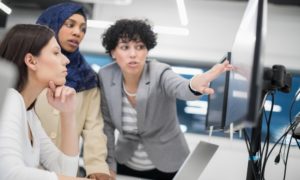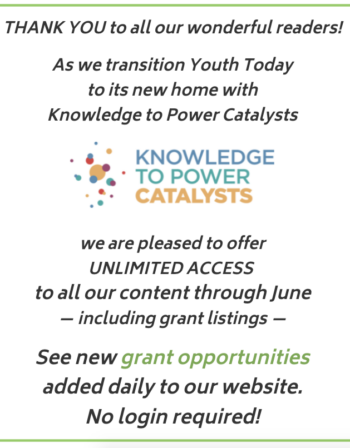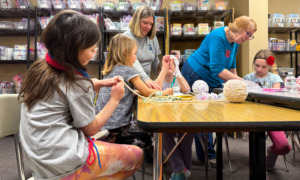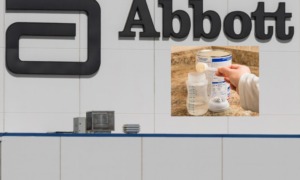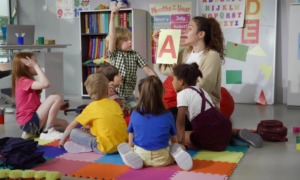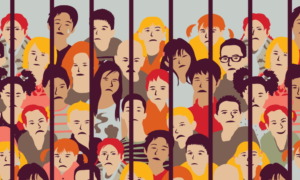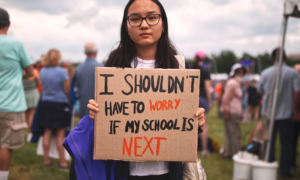![]() RAWPIXEL.COM/SHUTTERSTOCK
RAWPIXEL.COM/SHUTTERSTOCK
In Philadelphia and in cities across the country, thousands of youth are engaged in purposeful internships, summer work programs and OST programs that have targeted efforts to ensure youth are career-ready. Through these programs youth can gain knowledge of what it takes to be successful in specific careers, learn from professionals in various fields and even get hands-on experience working side by side with career professionals.
Career development programs provide youth with a chance to make informed decisions about their future career path, build skills that will support them in specific careers or across careers and set intentions and S.M.A.R.T. goals for their futures. I think we can all agree that these programs are extremely beneficial for youth and our society. So how can we ensure that all youth programs are using strategies to help youth be career-ready?
Let’s start by ensuring that we don’t leave these efforts to be led solely by local Workforce Investment Boards and other organizations that are focused on career development. At the same time, let’s make sure we know who these organizations are so we can lean on them for support and resources.
One example of these types of resources is the Philadelphia Youth Network’s Career Development Framework. This framework outlines a continuum of career development phases such as building awareness, exploring and preparing, and training and immersion. It also identifies important skills and mindsets that youth should develop through programs, including academic and technical skill development, 21st-century skills, character development and reflective practice. The framework shows how when youth are engaged in a continuum of activities that promote the mindsets and skills listed above, they can be career-ready and prepared for career advancement.
Another example of a resource to guide youth programs in understanding the continuum of career development and what activities are appropriate within each area is New Ways to Work’s Career Development Continuum.
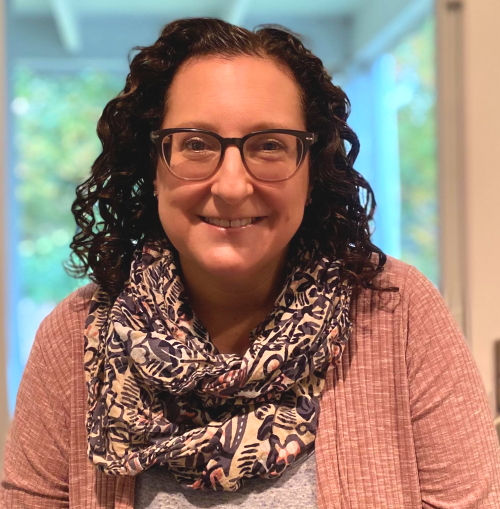
Shira Woolf Cohen
Similarly to the Career Development Framework, this continuum outlines the phases of career development — awareness, exploration and preparation. In addition, the continuum provides suggestions for the specific types of activities that would match each phase — everything from taking a career aptitude assessment during the awareness phase to gaining an industry certification in the preparation phase. Not every activity identified within the continuum is for every youth program, but it can provide a menu of choices and a place to spark ideas that meet your program’s mission.
6 ways to add career-readiness
Now that you’ve had a chance to explore two approaches for career development, here are some strategies to put them into action within your programs:
- Align your program activities with phases of career development. Don’t try to change your program’s activities, but rather infuse the activities with opportunities to become aware, explore and prepare for careers. Find spaces to integrate guest speakers, site visits, opportunities to give back and to interact with career professionals.
- Focus efforts around getting to know youth in your program and ensure they are able to get to know themselves too. Find ways to have students explore their skills, talents, interests and intentions for the future. This will help prime their brain to be ready and aware of opportunities that will help them reach their goals.
- Get youth out into the real world to learn. This could mean participating in job shadowing, work-site visits, volunteering, campus tours and networking events. Showing youth around the “real world of careers” can help them gain a deeper understanding into what it takes to be successful within specific careers and the world of work.
- Expand your thinking around career readiness to include cross-sector competencies, formerly known as “soft skills.” These are the skills youth need to be successful regardless of what career path they choose. Think communication, problem solving, time management, emotional regulation and conflict management, to name a few. No matter the mission of your program or specific program activities, you can have targeted focus and integration of these skills.
- Find time for reflection with youth and make targeted efforts to reflect on the connection between your program activities and the future. When it is possible, make sure youth in the program can see the direct connection between what they are doing in your program and how it can support them within society and the real world. Reflection can happen in many ways to reach a variety of different types of learners, such as journaling, photography, film making, podcasting, collaging, mind mapping, movement and more.
- Build partnerships to support your program’s efforts around ensuring youth are career-ready. This can include career professionals, career-industry sites, nonprofit organizations and charities, government officials and even family members. Partners are often willing to support your program and can span a continuum of partnership levels that include a basic level of a sporadic connection to a reciprocal collaboration. There are values in all these levels of partnership to support career-ready youth.
These ideas are not meant to have you reinvent the wheel with your program’s activities, but instead to give you some entry points to share the responsibility of preparing youth for their future. Each youth-serving stakeholder plays a part in ensuring students are career-ready.
State-level departments of education have requirements for schools to support student development for the future, city governments are implementing efforts across their municipalities to ensure a strong economy through youth employment and local workforce boards have youth initiatives and programs. Direct youth programs hold a portion of this responsibility too.
Through your mission and activities, your program should integrate formal and informal ways of preparing youth for their future. Who knows … you might just have the next president, Nobel prize winner, inventor, teacher, or famous artist within your program. Integrating these strategies can ensure all the youth in your program see into their future and that the future is bright.
Shira Woolf Cohen is an educational leader and facilitator of professional learning and co-founder of Innovageous. An adjunct professor working with preservice teachers and aspiring leaders, she has over 25 years experience developing and implementing career development programs with K-12 youth.




